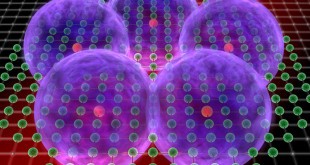In a quantum leap forward, researchers at the University of Copenhagen have unveiled a groundbreaking innovation: the “quantum drum.” This remarkable technology, capable of detecting pressure, heat, gas leaks, and even the shape of a single virus, has been adapted to operate at room temperature.
Until now, the quantum drum’s application outside the laboratory was hampered by the need for cooling with liquid helium, bringing the temperature close to absolute zero. This cumbersome process was a major barrier to practical use, especially in consumer devices. However, a recent breakthrough has eliminated this cooling requirement.
This achievement could soon pave the way for the integration of quantum technology into everyday devices, potentially revolutionizing industries and consumer experiences.
The Quantum Drum: A Symphony of Precision
At the core of this innovation lies a thin membrane that vibrates at an incredibly small amplitude. The drum’s vibrations are so minute that they necessitate the application of quantum physics principles to describe their behavior accurately. This unique characteristic transforms the quantum drum into an ultra-sensitive measuring device, aptly dubbed a “quantum supersensor.” Its vibrations respond to various stimuli, enabling the detection and measurement of a wide array of influences with unparalleled accuracy.
Applications Beyond Imagination
Imagine a sensor so sensitive that it can measure the vibrations of a person shifting from one leg to another thousands of kilometers away. While this may sound like science fiction, it serves as a testament to the astonishing precision of the quantum drum. Changes in temperature, the presence of gases, and even the introduction of minuscule entities like viruses can be detected and measured with exceptional precision. Additionally, by introducing small pieces of metal or magnets onto the drum’s membrane, the technology can discern electric and magnetic fields with astounding accuracy.
Overcoming Cooling Hurdles
One of the most remarkable aspects of this technology is its ability to achieve laser cooling—bringing the membrane close to the quantum ground state—directly from room temperature. Through a combination of a novel shock absorber and a specialized laser-cooling technique, the quantum drum can achieve its remarkable precision even at room temperature.
This is a significant achievement because usually, such cooling processes require cryogenic temperatures to mitigate the impact of thermal noise and decoherence. By implementing a unique combination of quantum control techniques and advanced designs, the researchers have managed to cool the mechanical resonator to remarkably low energy levels, achieving a new level of sensitivity and accuracy.
From Laboratory to Consumer Devices
The transition from a laboratory curiosity to a practical technology has always been the ultimate goal. With the cooling challenges resolved, the quantum drum’s potential applications have expanded significantly. It can be integrated into small setups, making it feasible for use in various industries. For instance, it could monitor temperature and gas leaks in semiconductor processing plants, contributing to enhanced efficiency and safety. The most intriguing prospect, perhaps, is the integration of this quantum technology into consumer devices like smartphones. This could usher in a new era of precision and sensitivity, transforming the way we interact with our gadgets.
Unlocking New Horizons
The researchers at the University of Copenhagen are not content with stopping there. They are exploring advanced applications that were once relegated to the realm of science fiction. One such aspiration is to use the quantum drum to image microscopic entities like viruses, revolutionizing our approach to understanding and combating these elusive foes. Just as magnetic resonance imaging (MRI) transformed medical diagnostics, a quantum-powered equivalent could open new frontiers in healthcare and research.
The invention of the quantum drum and its subsequent adaptation to operate at room temperature represents a monumental stride toward realizing the potential of quantum technology. As we inch closer to integrating these precision instruments into our daily lives, the horizon of possibilities broadens, promising transformative advancements across industries and the seamless integration of cutting-edge technology into the fabric of our existence.
Reference: DOI: 10.1364/OPTICA.468590
 International Defense Security & Technology Your trusted Source for News, Research and Analysis
International Defense Security & Technology Your trusted Source for News, Research and Analysis

